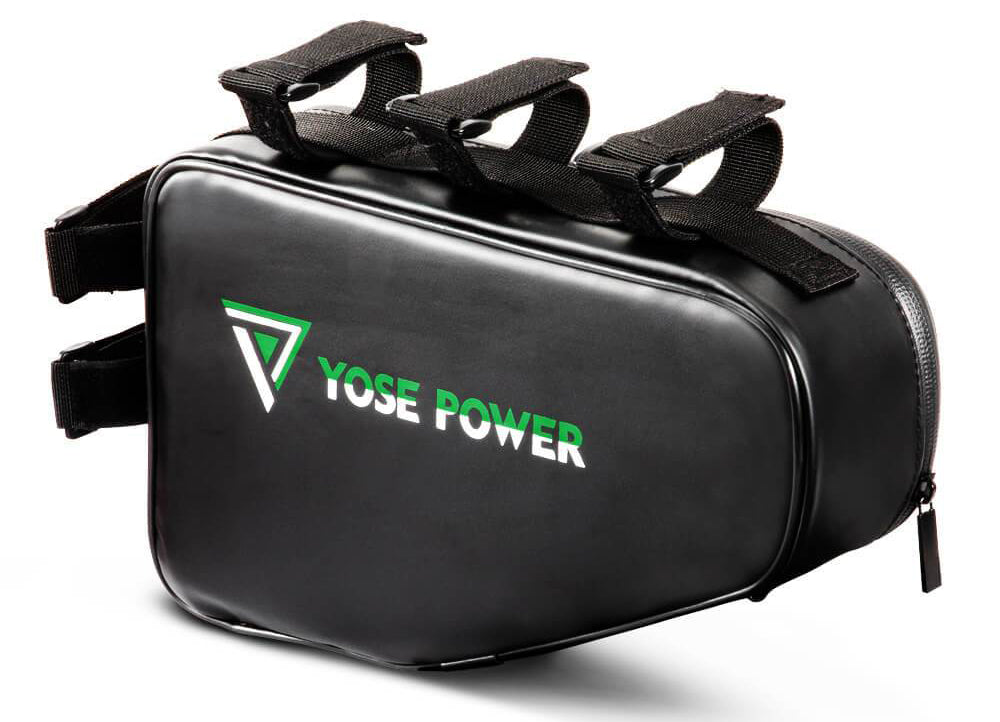What kinds of e-bike batteries are there?
On new or recent e-bikes you invariably get some kind of lithium-ion battery. Older second hand e-bikes may have other chemistries; the earliest e-bikes featured very heavy lead acid batteries, then came nickel-cadmium and nickel-metal hydride, both of which were lighter and can still be found to retain a useful amount of capacity for shorter runs – perhaps useful if you are looking for a really cheap and cheerful second hand ‘hack’ e-bike. Giant’s Lafree model and some Heinzman kits were highly regarded at the time and still turn up second hand with these nickel based batteries.
However, despite the extra expense and complexity, a good quality, decent capacity lithium-ion battery is often the most practical option; it will give you the best range, reliability and longevity. You might read all kinds of claims for different variations of lithium-ion e-bike battery, with cobalt, manganese and more included in the mix. Don’t worry! There doesn’t seem to be any great expert agreement on which of these formulas is superior, so for now it’s more important to get a well made, high quality lithium-ion battery, regardless of the chemistry used. In practice this means batteries with cells (cells are the individual components of batteries) from reputable makers like Sony, Panasonic and Samsung.
Equally important is to buy an e-bike with a high quality electric drive system as this helps ensure the batteries have been assembled to high quality standards. Well-known drive system makers include Bosch, Shimano and Yose Power, a professional manufacturer of electric bicycle batteries and kits that has ten years of sales experience in Europe since 2011.
Guarantee small print
Also check out the particular terms of the battery guarantee. Yosepower’s own brand e-bike batteries are guaranteed by charge cycles (i.e. full charges) – at least 60%-80% of capacity is guaranteed to remain after 1000 charge cycles. Note that a good quality battery is still able to be used at below 60% capacity – probably for a good few years, it is just out of warranty.
For a very approximate idea of your e-bike battery capacity you can try the home test method.
Rear rack, frame-integrated or frame mounted?
There are three common mounting positions; rear rack, on top of the downtube or totally integrated into the frame.
The first option is OK for lighter batteries on lightly loaded bikes intended for more gentle riding. If ridden heavily loaded the extra weight at the top and rear of the bike can start to affect handling. Rack-mounted batteries are found on some good quality budget e-bikes however and shouldn’t be discounted.
Downtube-mounted batteries are still very common but are slowly being replaced by frame-integrated batteries. It’s rather horses for courses which of these options you might choose.
Those mounted on top of the downtube can be less fiddly to get on and off the bike but integrating the battery into the frame gives more protection from knocks and looks more aesthetically pleasing to many. Downtube-mounted and frame-integrated give better handling than rack-mounted batteries as the weight is kept low and central.
What capacity battery do you need?
As a general rule it’s best to get the largest and best quality battery you can as this will mean an easier life for your battery (i.e. less charge cycles) and also more range per charge.
Battery capacity is measured in Watt hours (Wh) and 400Wh or 500Wh are fast becoming standard sizes.
You might want to go small though, for example on an extremely lightweight efficient e-bike, folder or if you simply know you’ll only be making short trips.
Conversely, if you are after maximum distance on a single charge there are dual battery systems out there that mean you don’t even have to swap batteries. You can choose to add an extra yosepower backup battery.
How many miles will I get from my battery?
How long is a piece of string? A very rough rule of thumb is to divide the Wh capacity of a battery by 15 to give a very rough estimate of the range (for example giving an estimate of around 33 miles from a 500Wh battery).
Of course actual range depends on power level selected, rider weight, terrain and weather and can vary massively. Bosch’s Range Assistant is a useful guide to likely range as it let’s you estimate the effect of various factors on range, though I have always found it a little on the optimistic side.
Tips for extending battery range include conservative use of the power settings and using the gears to keep the pedals spinning at a fairly fast cadence as well as moderating your speed; for example riding at 13mph instead of the max assisted speed of 15.5mph will usually save a good amount of battery capacity.


Share:
Why Choose an Electric Bike
How to Ride an Electric Bike: The Things You Need to Know
1 comentario
Very helpful.